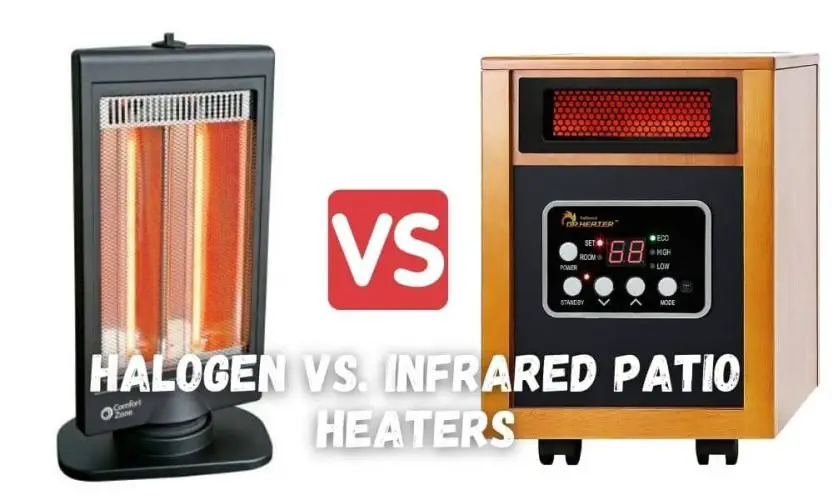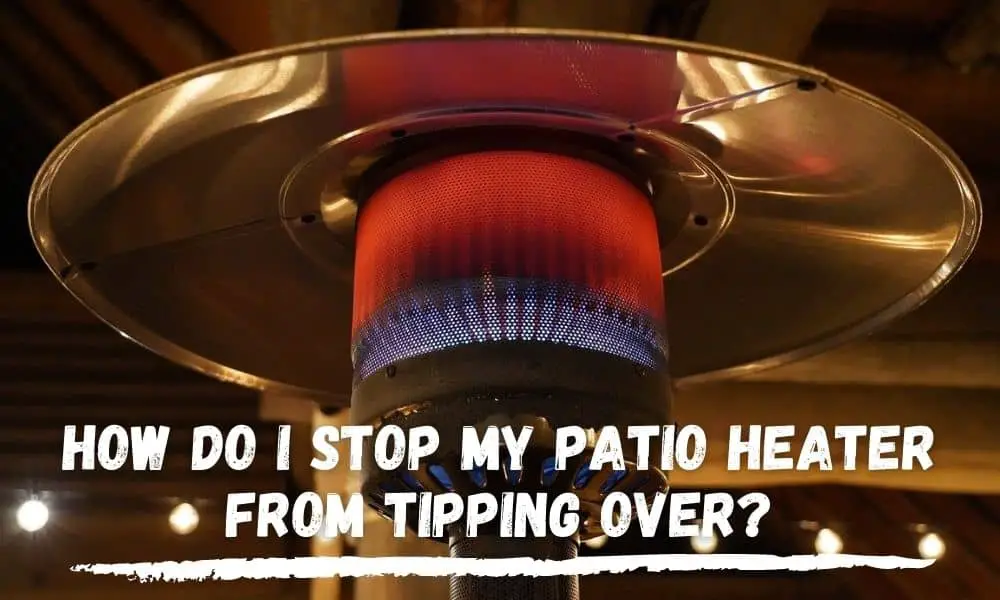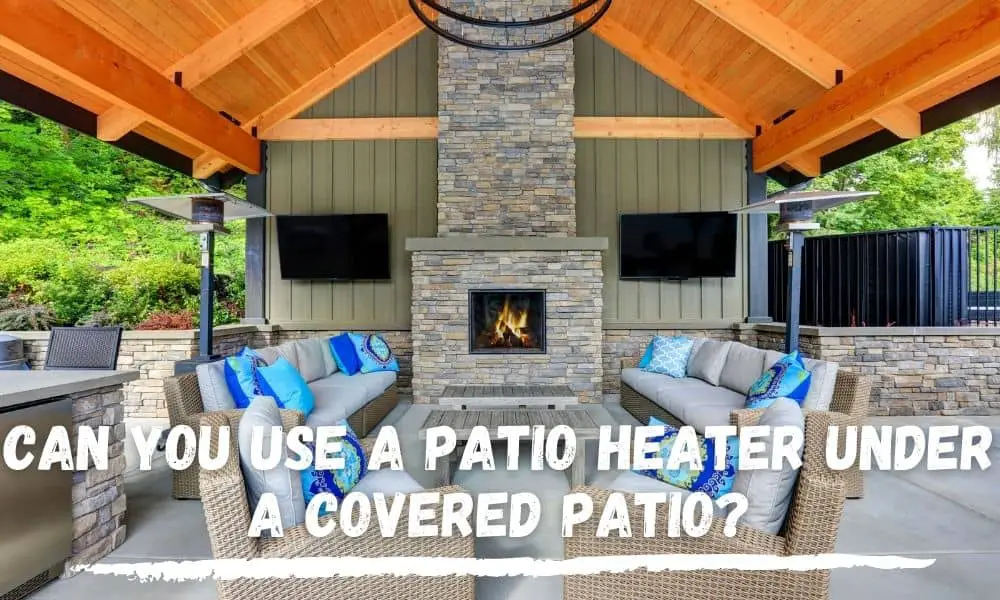Halogen and infrared patio heaters are increasingly becoming popular. Since they use electricity as their power source, they have numerous benefits, including the lack of carbon emissions.
But which of these two electric patio heaters surpass the other?

Some experts will say infrared is better, while others consider halogen units as the best option. Well, you can decide for yourself by looking at the advantages and shortcomings discussed in our article.
Quick Navigation
- Are Halogen Heaters Bad for Your Eyes?
- Can I Leave Infrared Heater on All the Time?
- Can You Leave a Halogen Heater on Overnight?
- What Is the Difference Between Infrared and Halogen Heaters?
- Do Halogen Heaters Use More Electricity?
- Are Halogen Heaters Cheaper to Run?
- Are Infrared Heaters Good for the Outdoors?
- Conclusion: Halogen vs. Infrared Patio Heaters. Which is Better?
Are Halogen Heaters Bad for Your Eyes?
Halogen units may be bad for your eyes, but that shouldn’t stop you from getting one. Make sure you get a quality product to avoid any issues.
Avoid looking directly at your heater for long. These heaters have a bright glow that may cause eye conditions after prolonged staring. Remember to observe your manufacturer’s guidelines to ensure safety.
Can I Leave Infrared Heater on All the Time?
The two typical methods heaters utilize are convection and infrared heating. Unlike conventional heaters that heat the air first, then provide warmth via heatwaves, infrared units heat objects. Thus, you’ll feel the heat directly and uniformly.
On the other hand, gas, wood, and fan heaters have non-uniform heating. This is due to air movement where hot air rises, leaving your feet cold.
As a result, convection units rely on more energy to run, which raises your utility costs. The perfect way to use infrared units is by employing temperature parameters.
An infrared heater allows you to set the temperature you want it to function while you’re around. Simultaneously, it should enable you to select the lowest temperature setting.
Usually, the maximum temperature for comfort and energy efficiency ranges from 20 to-21-degrees Celsius. A 14-15-degrees-Celcius lower limit is ideal.
The benefits of using temperature parameters include;
- Minimization of heat loss
- Comfortable heat output
- Energy efficiency thus cost-effectiveness
An excellent infrared heater efficiently turns on when the temperature hits the low limit and off past the high limit.
So, infrared heaters can efficiently run 24/7, provided you use the temperature parameter settings.
Can You Leave a Halogen Heater on Overnight?
One of the excellent advantages of halogen models is that they don’t produce carbon monoxide. But is that enough to use them overnight?
These heaters heat small areas. That means that you’ll have to place them close to your bed while sleeping to benefit.
Even though they feature overheat protection, their front parts heat excessively. This makes them a fire hazard. Hence, they aren’t ideal for overnight heating.
You can opt for long to medium wave heaters for overnight heating. Long and medium wave units allow you to keep them away from your bed plus other flammable materials with ease.
Consider using units that rely on room temperature to function.
What Is the Difference Between Infrared and Halogen Heaters?
Let’s look at infrared vs. halogen heaters and their merits and demerits over each other to understand the difference.
Infrared Patio Heaters
Infrared patio heaters function similarly to the sun but at a far-infrared spectrum ranging from 9-14 micrometers. Units using the far-infrared spectrum don’t cause skin damage and diseases like the sun since this is a unique and narrow range.
Infrared patio heaters rely on electromagnetic waves. These result in molecule oscillations leading to energy release and, consequently, heat generation. Therefore, people and objects around an infrared heater get direct warmth.
Infrared patio heaters require low electricity to run. Not to mention, their direct object-heating results in the reduction of heat loss by air heating.
What’s more, they don’t use fossil fuels like gas heaters; thus don’t have carbon monoxide and carbon dioxide emissions. Therefore, they don’t present health risks like gas and wood-burning units.
They rely on long-wave infrared heat technology. Patio heaters using the long-wave technology use ceramic heating elements that heat quickly and spread infrared heat over a long-range distance. Besides covering more expansive areas, they have a low glare that ensures your eye comfort.
Halogen Patio Heaters
These patio heaters function almost in the same fashion as infrared heaters. Their energy radiation is also within the far-infrared spectrum. However, the type of waves produced differs from those of infrared patio heaters.
These patio heaters employ short-wave technology that throws high-intensity heat over short distances. Due to this, they have a small heating area. This forces people to stand or sit close to the patio heater to receive ample heat. If you stay too close to the heater for long, you may experience a ‘dry eye’ and a headache.
Suppose you are a business owner, do you want satisfied, loyal customers or dissatisfied customers that won’t come back? Do you like summertime barbecues? Guests attending your dinner parties, friends, and family members may not be happy if they go to bed feeling hazy and in pain.
Besides, these heaters feature a bright red glow. This may not fit properly with the décor of your outdoor space or garden. However, their glowing light allows you to see things with ease without turning on another light source.
Halogen units are also cheaper than infrared models. While halogen patio heaters may cost as low as $20, the latter typically exceeds $100.
Do Halogen Heaters Use More Electricity?
Some people think that halogen heaters utilize more electricity than other electric heaters and gas units. However, halogen heaters require less electricity than other electric heaters if used for the same amount of time.
So what is the reason for higher electricity bills for people with these heaters compared to those with other electric heaters?
Halogen heaters rely on short wave radiation that covers small areas. To heat, a large space takes them longer than patio heaters using long waves. Therefore, you’ll have to run them for longer to achieve similar results.
So, when looking at similar time frames, these heaters require less energy. But for the achievement of a particular heat level, they use more electricity.
Are Halogen Heaters Cheaper to Run?
As mentioned, halogen patio heaters heat small sections; hence take longer to warm an area. You’ll need to use them for a more extended period to achieve similar results to an infrared model. Therefore, you will likely spend more.
Below are the different types of electric heaters considering running costs
- Fan models- Most expensive
- Oil-filled models
- Halogen models
- Storage heater
- Infrared models
Are Infrared Heaters Good for the Outdoors?
Infrared heaters are excellent for the comfort heating of outdoor areas such as patios and pub gardens. For starters, they use infrared heat. Within seconds of starting, you’ll feel the warmth emanating from them.
Unlike wood burners, quartz heaters, gas heaters, and some electric heaters, you won’t have to wait to feel the heat.
Moreover, this radiant technology ensures they don’t waste energy like in conventional models. Hence, you’ll spend less. However, since these are outdoor areas, you’ll need to set them slightly higher than indoor spaces.
This is because there are few objects in outdoor spaces that absorb and emit heat.
Besides, these low glare heaters don’t need tedious pre-heating practices like wood-burning heating units. Their swift starting is ideal for stress-free relaxing in your garden after a long and tedious day.
Conclusion: Halogen vs. Infrared Patio Heaters. Which is Better?
You now know the differences between these two types of heaters. What price are you willing to part with for a patio heater? How much can you spare to cater to the utility bills?
Which areas do you intend to use your patio heater, indoor, or in your garden? What time do you want to use your patio heater? Making an informed decision between the two is easy after answering all the above questions.
Most importantly, look at your heating requirements. Your desired range of heating determines whether to go for a short-wave, medium-wave, or long-wave heat source. Remember to research your products to get those with a long life span.




